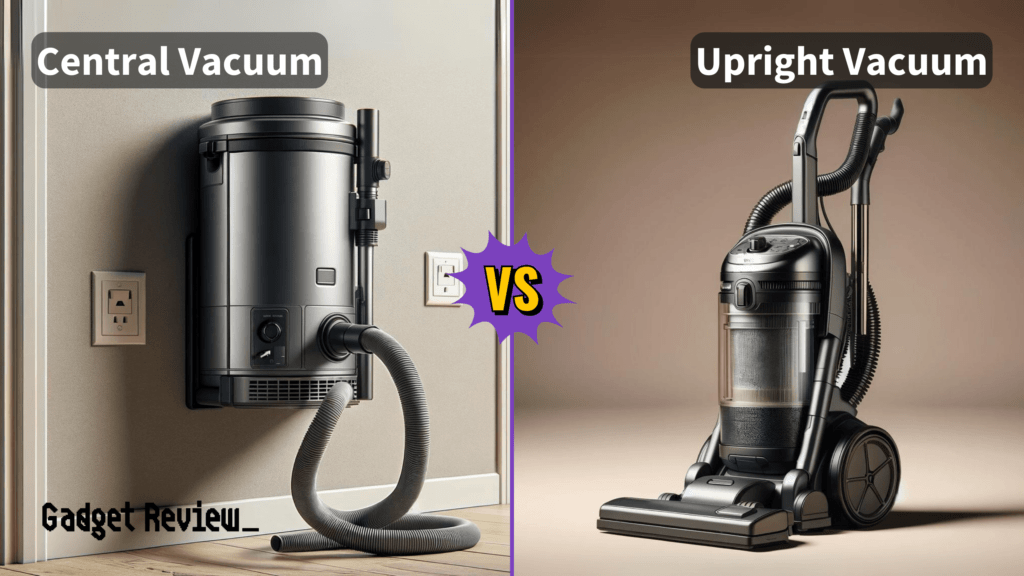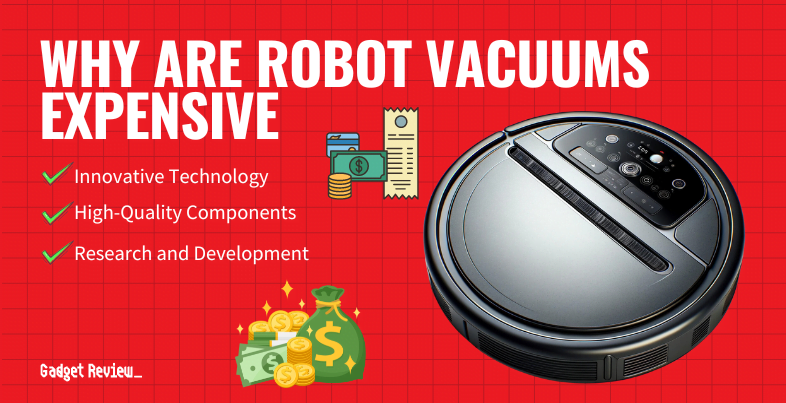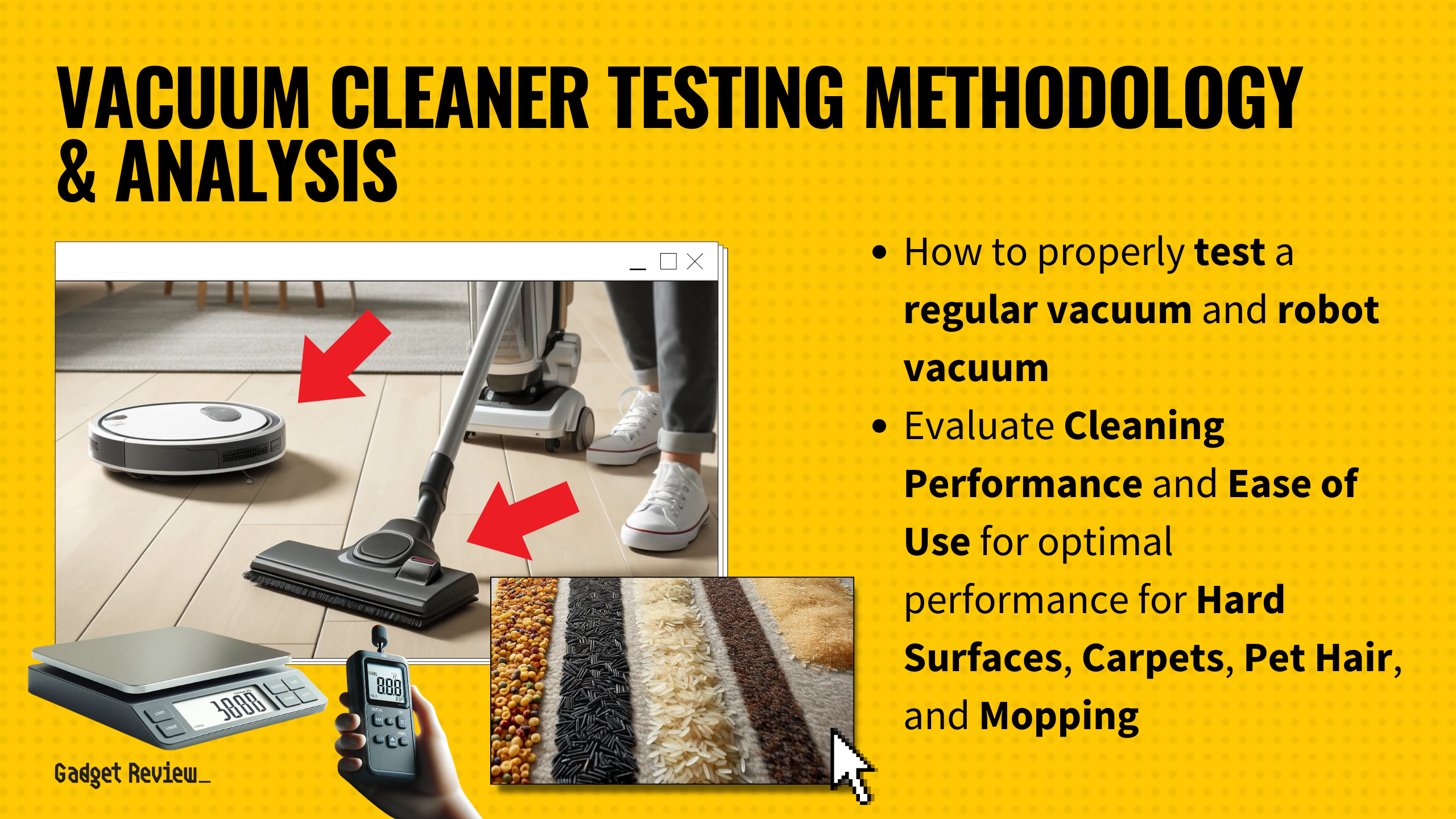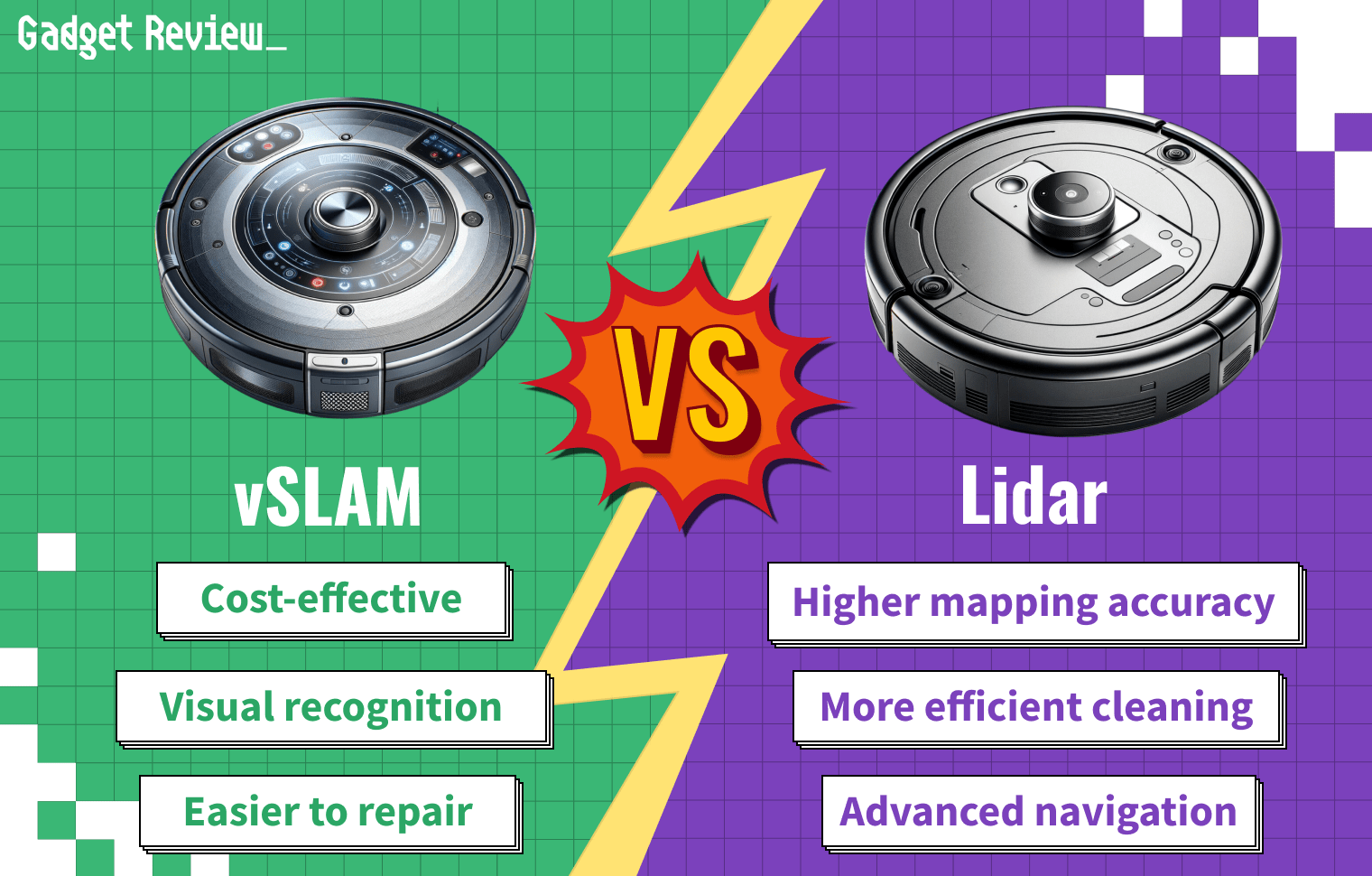You might be wondering whether a central or upright vacuum is a good choice. In this post, we’ll delve into the specifics of each type of vacuum cleaner to help you pick one out.
Central vacuums are more powerful and efficient, especially for larger homes, but come with a higher initial cost.
Upright vacuums are portable, easier to handle, and more budget-friendly, making them suitable for smaller spaces and quick cleanups.
Central vs Upright: Pros and Cons
In the table below, you’ll see the features of both vacuum types.
| Feature | Central Vacuum | Upright Vacuum |
|---|---|---|
| Convenience | Requires installation | Portable |
| Noise level | Quieter | Noisier |
| Suction power | Stronger suction power | Weaker suction power |
| Filtration | Better filtration, capturing more allergens and dust | Can vary depending on the model |
| Cost | Higher: $800 – $3,500 | Lower: $80 – $500 |
| Ideal for | Larger homes with multiple floors | Smaller homes or apartments |
Central Vacuum and Upright Vacuum in Action
Watch the video below to see a central and upright vacuum in action.
Power and Efficiency of Central Vacuums
Central vacuums stand out for their exceptional power. They offer 3-5 times more suction than upright models, making them effective at removing embedded dirt and allergens.
This makes them an excellent choice for larger homes where thorough cleaning is a priority.
Design and Usability

Central vacuum systems feature a stationary motor, typically installed in a basement or garage. This setup allows for lightweight hoses and retractable features, making vacuuming less physically demanding.
The built-in nature of these systems allows you to clean multiple rooms easily without dragging a heavy unit around.
insider tip
Central vacuums can be used to clean carpets, hard floors, upholstery, and even cars.
Cost and Longevity
While central vacuums require a higher initial investment (around $800 to $3,500), they are built to last.
This long-term durability can make them more cost-effective over time, as they require fewer replacements compared to upright vacuums.
Portability and Convenience of Upright Vacuums
Upright vacuums are known for their convenience. They are ready to use right out of the box and are easy to move from room to room.
This makes them ideal for smaller homes or apartments where storage space is limited and quick cleanups are common.
STAT: The key players in the upright vacuum market include Dyson, SharkNinja, Bissell, Electrolux, and Miele.
Physical Design
Upright vacuums are heavier, which is a concern for those with physical limitations.
However, they come in various models (bagged and bagless options), offering versatility for different cleaning needs.
Affordability and Maintenance
Upright vacuums are more affordable upfront.
But, they may need to be replaced more frequently than central vacuums.
Regular maintenance, like emptying bags or containers, is also a factor to consider.
Making the Right Choice
When deciding between a central and upright vacuum, consider the size of your home and your specific cleaning needs.
A central vacuum is a great investment if you have a larger home and need powerful, efficient cleaning.
STAT: North America held the largest market share in 2022, accounting for 40.5% of the global upright vacuum market.
For smaller homes or specific area cleaning, an upright vacuum’s portability and ease of use might be more appealing.
Budget is also a key consideration.
Central vacuums are a long-term investment with higher upfront costs, while upright vacuums are more budget-friendly initially but may incur more costs over time.
Summing Up Your Vacuum Choices
Central and upright vacuums have their unique advantages. Central vacuums offer powerful cleaning and efficiency for larger homes.
Upright vacuums provide convenience and portability for smaller spaces and quick cleanups.
Consider your home size, cleaning needs, and budget to choose the vacuum that best suits your lifestyle.
























